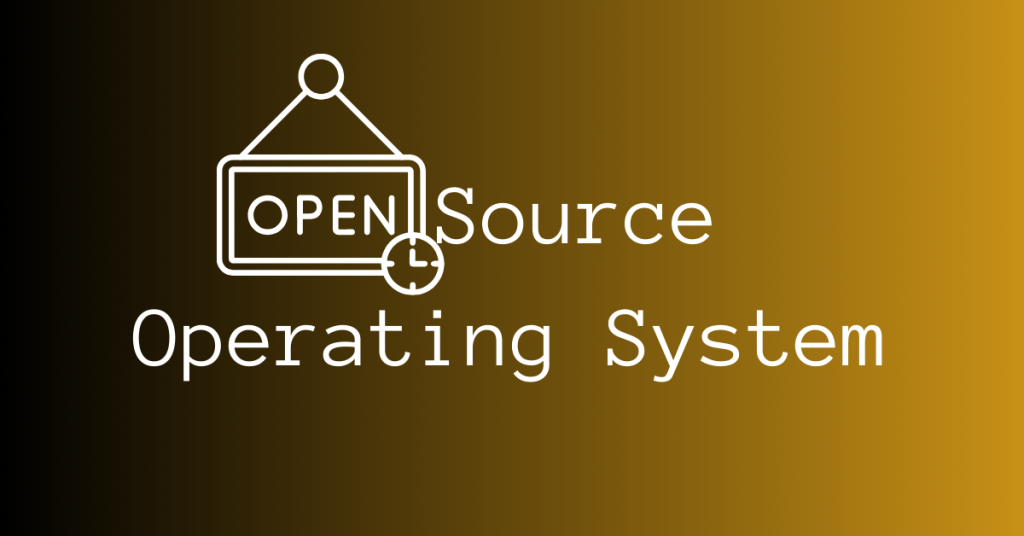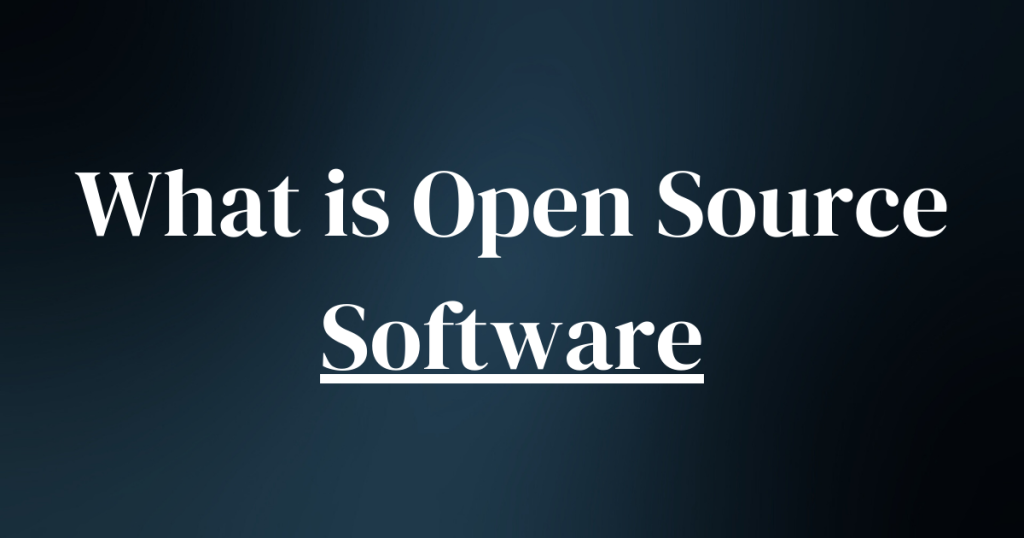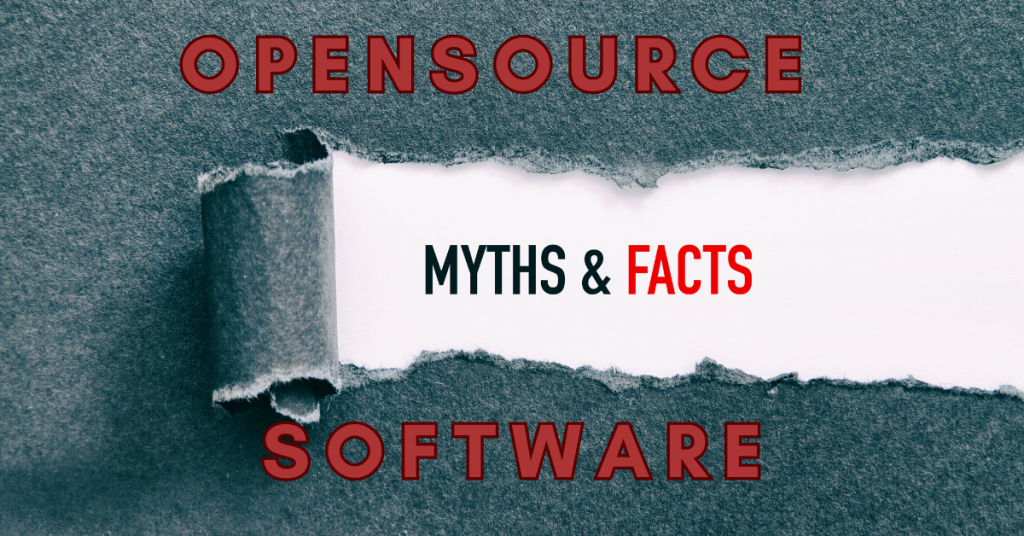An open source operating system is a software that has an open and easily accessible source code. This transparency allows its users to view, use, modify, or even share the source code with others.
The cherry on the top is that the number, type, and design of the modifications is not restricted.
OSS can be used for commercial as well as individual purposes. It is licensed in such a manner that it can be reproduced and reshared innumerable times, and can be used whenever and for whatever you like.
Open source operating system is based on the following 3 principles:
- Transparency
- Freedom
- Collaboration
OSS’s source code is easily accessible, viewable, and editable. Anyone who wishes to view, use, edit, modify, or share the source code can do so without paying any hefty charges.
Furthermore, open source fosters collaboration amongst knowledgeable developers. It also helps in coming up with innovative solutions for any big or small software related problems.
Open source technology is rapidly climbing the charts because it is like a one-size-fits-all piece of clothing. No matter if you are a beginner, an intermediate, or an expert developer, OSS will have something for you in it.
Lastly, it wouldn’t be wrong to say that open source has been the flag bearer of the technological advancement and transformation that has taken place over the last few years.
Is proprietary software safer than an open source operating system?
The simple answer is no. This is due to the fact that an enormous number of software is being produced which is also resulting in the detection of more and more security vulnerabilities and flaws.
One of the biggest advantages of an open source operating system is that independent third party coding specialists and developers can look into any potential problems with the software. Unlike proprietary software they can also confirm and corroborate a company’s claim of cent percent privacy.
Benefits of Open Source Operating System
OSS’s popularity amongst its users is proof of its multiple benefits. Let’s take a look at some of them.
- Cost-effective: Majority of the open source projects are free to use and download. Apart from this, many artists, musicians, and writers seek help from applications that use an open source software, thereby decreasing their own production costs.
- Security: An open source operating system is under constant scrutiny owing to the large and talented open source community of developers. This leads to faster detection and correction of security vulnerabilities.
- Customization: In my opinion, this is the biggest advantage of OSS. Users can not only access the software and its source code for free, but they can also customize it according to their own needs and preferences.
- Innovation: The synergistic approach of open source operating systems gives rise to an innovative ecosystem, resulting in the creation of many new applications and features.
- Start as you like: OSS is the best option for companies that wish to start on a small scale. The community version of the software is best suited for this purpose.
- Attraction of talented developers: Because open source is the future of technology, many up and coming skilled developers choose to work with OSS. These developers seem to enjoy the flexibility to create their own projects.
Popular Open Source Operating Systems
- Linux Kernel
There are many open source operating systems but the most popular amongst them all is the ‘Linux Kernel.’ It was developed by Linus Torvalds in 1991.
Majority of the operating systems are Linux based. It is this very kernel that interacts with a computer’s hardware.
The Linux kernel offers the essential features required by every operating system, managing file handling, data processing and allocation into memory, device interaction, and other basic operations.
Moreover, this open source operating system ensures that you don’t have to deal with any kind of virus, malware, or ransomware.
One of the main reasons for Linux’s rising popularity is its zero entry cost and reliability. This open source project can be downloaded on any computer innumerable times without any charges.
The development of the Linux kernel continues under the stewardship of Torvalds, with version 5.0 of the Linux kernel recently released.
In today’s world, Linux powers Ubuntu, the most user friendly OS, Android, the leading operating system for smartphones, and desktops.
- Linux Mint

With its straightforward interface, Linux Mint OS provides the ideal balance of modernity and power. It is highly well-liked by both novices and experts due to its multimedia features, dependability, and eye-catching visual appeal. You can use this open source operating system (OS) for free.
- FreeBSD

Another noteworthy operating system is ‘FreeBSD.’ It is a free and Unix-like OS which is mainly used for intranet and internet server compatibility and networking. Before the creation of Linux and Windows, the computer world was dominated by Unix.
FreeBSD is designed to focus on the speed and stability of the internet and it can also efficiently handle large loads of memory.
- Android

The Android open source project is mainly designed for consumer goods. The production quality of this operating system meets all the requirements of the ever evolving smartphones.
- ChromeOS

It belongs to the Linux and Chromium families and has features including enhanced security, support for compatible Chrome and Android apps, Aura window manager, Google cloud print, integrated media player, virtual desktop access, and cloud-based management.
ChromeOS is a partly open source operating system because it only supports Nexus devices or its hardware.
- Ubuntu Desktop

Ubuntu for desktops is all you need to run your home, school, organisation, or business. It is a complete package consisting of pre-installed applications, browsers, media apps, email, and games etc.
Because Ubuntu has an open source, it is free to use, download, and share. Moreover, Ubuntu is one of the most secure open source operating systems owing to its built-in firewall and virus protection software.
- Ubuntu Server

Ubuntu server is a product of the Ubuntu operating system which plays a vital role in the world of browsing and the internet. Unlike Ubuntu desktop, Ubuntu server is designed for server use and does not include graphical user interface (GUI) and only a few pre-installed applications.
- Fedora Linux

Fedora Workstation is a user-friendly open source operating system for laptop and desktop users. It is the ideal operating system for developers because it includes the best and latest datacenter technologies.
- Kali Linux

A Linux distribution which is specially designed for Penetration Testing, Ethical Hacking, Computer Forensics, Reverse Engineering, and network security assessments.
It does this by providing common tools, configurations, and automations which allows the user to focus on the task that needs to be completed, not the surrounding activity.
Challenges & Considerations
An open source operating system has multitude benefits but there are some aspects of this system that make it less favourable in comparison to proprietary software. Let’s take a look at all the challenges a user might face while using OSS.
- User-friendliness: The level of user-compatibility of an open source operating system is quite less than proprietary software. This steep learning curve makes OSS less likeable for people who are not tech savvy. Apart from this, developers who are not very fond of changes and new technology may have a hard time adapting to this operating system.
- Hardware compatibility: Not all open source operating systems are compatible with all types of hardware. Special consideration needs to be given to hardware compatibility when you are beginning to work on an open source project. Although it’s a hurdle, it’s still not big enough to not use open source operating systems.
- Support: Even though the open source community is so large and always lending a hand to those in need, it still can’t match the level of support available within a proprietary operating system.
The future of Open Source Operating System
At this point, the future of open source operating systems is shining bright like a diamond. More and more people are becoming fond of this technological advancement, and the biggest proof of this is IBM purchasing Red Hat for a whopping 34 billion dollars.
Red Hat’s support for open source projects earned it a business of multi-million dollars, and now it owns organisations responsible for everything from integration services for the open-source cloud platform OpenStack through to creating the KVM hypervisor.
In many ways, the open source community is just like the educational community. In both cases, the masters share their knowledge and work with their students and colleagues which leads to the growth of the subject positively.
The open source world heavily relies on its community and promotes the principle of giving back to the community.
Another way of supporting the community is by giving back to it. Once a learner has excelled in learning a specific skill, he/she should be encouraged to help the community either by using that skill practically or by teaching that skill to someone else in their community.
Democracy is the best policy and the best democratic system is where the members are in complete control of choosing what they want.
So it wouldn’t be wrong to say that an open source operating system has the power to democratise the technological world. That’s because this OS gives its users the power to choose what they want, how they want, or what changes they want.
Thus, the autonomy given to its users by open source empowers them in a way like never before.
Why should you choose an open source operating system?
The Red Hat State of Enterprise Open Source report found that businesses typically choose open-source software because it’s cheaper. The report supports its stance by mentioning that 33% of software users cited the reduced cost as the main benefit of open source, whereas the other 29% stated access to latest upgrades as the main attraction of open source operating systems.
Additionally, the report stated that only 1% of enterprises ignore the value of open source software. This report was based on the interviews of about 950 IT leaders across the world.
This combined package of cost effectiveness, stability, open source code, the freedom to modify or share the source code, and community level collaboration is something you should not miss out on.
With recent revisions to rules of conduct aimed at making communities friendlier and less harsh, open-source communities are set for a rapid transformation that will see them become significantly more inclusive of gender, ethnic, and niche related diversity.
Which open source operating system is suitable for you?
An estimate of open source’s popularity could be made from the fact that the majority of popular operating systems and software have adopted the open source methodology.
From browsers to social media applications, open source has cast a spell on everything.
Before the creation of other distributions of Linux, CentOS was the preferred Linux distribution in the hosting industry for many years. It provided a free and open-source community supported computing platform.
Only recently it was announced that CentOS Project will discontinue all updates of CentOS Linux 7 in June 2024.
This announcement paved the way for Ubuntu Server to take over this distro and become the main operating system used for web hosting.
Organisations that relied completely on CentOS are bound to make a difficult choice.
While there are many Linux distributions available, those more closely related to CentOS Linux will provide an easier transition for your organisation’s desktops, servers, virtual machines, and more. Some examples of CentOS alternatives include Red Hat® Enterprise Linux, Ubuntu, Rocky Linux, AlmaLinux, Oracle Linux, and CloudLinux.
- Rocky Linux:

Rocky Linux is a stable and enterprise-ready Linux distribution that comes with a 10-year support lifecycle at no cost at all.
It is a popular choice for people looking to migrate from CentOS Linux because this distribution of Linux offers a user-friendly migration script without any charges.
- AlmaLinux:

AlmaLinux OS is an open-source, community-driven Linux operating system that fills the gap left by the discontinuation of the CentOS Linux stable release.
This enterprise pledges to be free for life and focuses on long term stability.
- Oracle Linux:

Oracle Linux is not just another distribution of Linux. It uniquely delivers Linux with everything required to deploy, optimise, and manage applications on-premises, in the cloud, and at the edge.
According to experts, it is more secure and easier to manage in comparison to other Linux distributions.
You may also be interested to read: Critical Evaluation of Open Source Software Misconceptions



